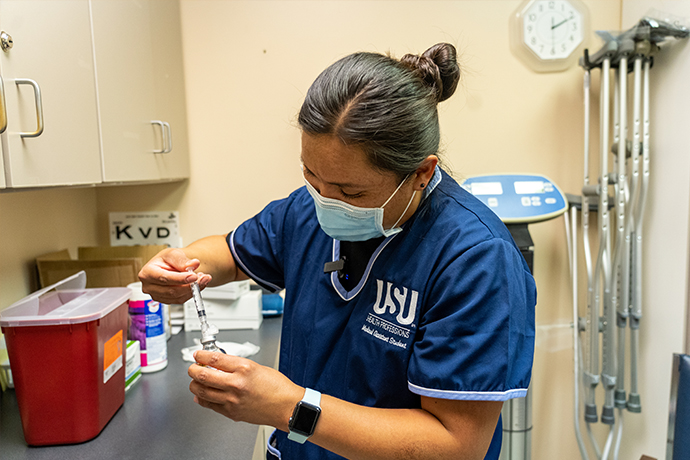The Past and Present of Technical Education Without Limits
By Gary Straquadine | May 18, 2021


Technical education is part of Utah State University’s land-grant mission to offer public education without limits. According to Justin Morrill, namesake of the Morrill Land-grant College Act that was signed by President Lincoln in 1862, this new kind of college in the U.S. was founded on the idea that “a higher education and broader education should be placed in every State within the reach of those whose destiny assigned them to, or maybe the courage to choose industrial vocations where the wealth of nations is produced .”
Teaching technical skills that prepare graduates for “industrial vocations” wasn’t just a good idea in 1862. A recent report on the country’s job growth and education requirements concluded that 30% of job openings require some college or an associate’s degree (tinyurl.com/Recovery2020jobs). Preparing people for many sectors of the workforce is part of our history, present, and future in the College of Agriculture and Applied Sciences (CAAS) and we are committed to a range of academic accomplishments and recognitions — from industry credentials and certificates of completion to associates, bachelors, masters, and doctoral degrees.
More than 100 years ago, Utah State initiated training programs for technical education instructors in agriculture, family and consumer sciences, and engineering. Teacher preparation at Utah State University has included vocation education for decades with the overwhelming majority of Utah’s high school and middle school technical education teachers trained in Logan.
Almost 60 years ago, the Vocational Education Act of 1963 codified technical education programs at public universities. In Utah, the 1963 Act was implemented at USU with new vocational programs in agriculture, making technical education a part of our college long before we added “Applied Sciences” to our name in 2013. The original CAAS technical education program dates to 1965 and was the agricultural machinery technology program under the leadership of Von Jarrett, Keith Hatch, and Darwin Jolley. That program continued into the 21st century with Evan Parker, Scott Wangsgaard, Daryl Reece, and today Royce Hatch – the son of one of our founding instructors, Keith Hatch.
The 2010 merger of Utah State University with the College of Eastern Utah (CEU) brought greater opportunities for technical education at a land-grant university. CEU was always known as a technical college with a focus on workforce development. In joining with Utah State, about two dozen of CEU’s technical education programs were refined and aligned with existing and emerging degrees in the college. In concert with the original intentions of historic acts of congress, technical education from the USU and CEU merger became an entry ramp for learners, traditional and non-traditional, who were focused on careers that did not require baccalaureate degrees.
With Utah System of Higher Education support, technical education certificates can now be “stacked and tracked” into associates of applied science and bachelor’s degrees in CAAS. With precision planning, stackable technical education certificates are now offered as off-ramps to jobs and opportunities to return with earned credits and re-enter school with career development goals – a remodel of traditional post-secondary education that has focused on the bachelor’s degree as the earliest completion award.
Our goal is to empower learners to navigate their individual career journeys. USU is in a better position than ever before to route secondary students in technical education pathways into post-secondary certificates and AAS degrees offered by the College of Agriculture and Applied Sciences. USU offers more than 30 distinct industry certificates and credential programs — ranging from automated manufacturing and welding to medical fields and ornamental horticulture — that prepare students for better than entry-level employment and continued academic achievement.
View full list
The College of Agriculture and Applied Sciences has implemented and refined the land-grant mission and is more innovative than ever before in responding to needs for particular workforce skills and partnering with industry to build technical education programs without limits.
Author’s Bio
USU Associate Vice President for Career and Technical Education Gary Straquadine is at USU Eastern’s Price campus. His career journey includes having been a high school agriculture teacher, a faculty member and head of USU’s Department of Agricultural Systems Technology and Education, and an administrator at The Ohio State University. He was named the 2020 CAAS Distinguished Professor of the Year and is a multi-year award winner in the college’s chili cook-off.

Gary Straquadine
gary.straquadine@usu.edu
